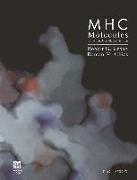- Start
- MHC Molecules: Expression, Assembly and Function
MHC Molecules: Expression, Assembly and Function
Angebote / Angebote:
3 nant expression systems have been used to make MHC molecules con taining a single peptide of interest. To date, fifteen single peptide class I structures (incorporating three different HLA and two different H-2 allotypes/isotypes) and four additional class II structures (two single peptide complexes and two superantigen complexes) have been reported. These advances have enabled us to study the atomic detail of antigen presentation and the general mechanisms behind peptide binding, and begin to construct models of T cell recognition. Another area of research which has exploded over the past five years has been the identification of MHC-associated peptides. There are several methods one can use to determine the sequence identity of MHC restricted peptides. Historically, the most successful technique, albeit crude and encumbered with serious limitations, has been the use of overlapping synthetic peptides and T cell clones. Unfortunately, this method absolutely requires: (i) knowledge of the target antigen, (ii) availability of T cell clones, and (iii) a relatively short overall length for the target source protein, such that a set of overlapping pep tides can be affordably synthesized. Briefly, the entire sequence of the tar get protein is chemically synthesized using overlapping peptides which are then screened for biological activity using standard T cell presen tation assays. Despite its limitations, this method was used to identify the first immunodominant epitopes reported in the literature and con tinues to be used successfully today.
Noch nicht erschienen. Termin unbekannt




